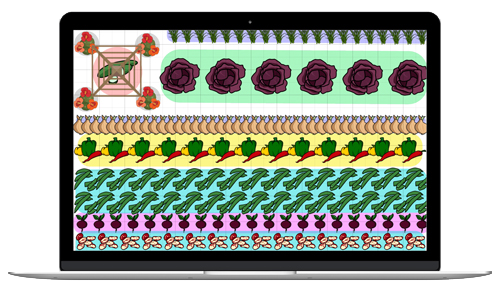
Black-eyed Susans (Rudbeckia)
Planting, Growing, and Caring for Black-eyed Susans
The Almanac Garden Planner - Use It Free for 7 Days!
Plan your 2025 garden with our award-winning Garden Planner.
Types
As well as the traditional black-eyed Susans, which grow 1 to 3 feet tall (or more), there are dwarf varieties that reach no more than 1 foot (perfect for containers). Varieties can be annual, biennial, or perennial.
The popular roadside Rudbeckia hirta with showy yellow flowers is a biennial in the wild but treated as a short-lived perennial in the garden. It self-seeds abundantly, naturalizing easily. If you sow seeds 6 weeks before the last frost date, you’ll see flowers in the first year, and they may return a few more seasons (but you can’t always count on it). Some of its many hybrids include:
- ‘Autumn Colors’: yellow, orange, red, and brown flowers; 18- to 24-inch stems
- ‘Becky Mixed’: lemon-yellow, golden-yellow, dark red, and reddish-brown flowers; 10- to 16-inch stems
- ‘Prairie Sun’: All-America Selections winner; 4- to 6-inch bright orange flowers that fade to yellow at the tips; 28- to 23-inch stems. See AAS Winning Rudbeckia varieties!
- ‘Sonora’: large golden flowers with big, chocolate-brown centers; 12- to 16-inch stems
- ‘Toto Gold’: dwarf type; classic yellow flowers with black centers; 12- to 16-inch stems; ideal for containers
There are also true, long-lasting perennials that will keep coming back and blooming year after year.
- ‘Goldsturmm’ black-eyed Susans (Rudbeckia fulgida ‘Goldstrum’), known for its longevity and a regular plant in late summer and fall gardens
- ‘Sweet’ black-eyed Susans (Rudbeckia subtomentosa), bearing taller flowers and ideal for more naturalized garden or meadow
- ’Gloriosa Daisies’ (Rudbeckia hirta ‘Gloriosa’), 12 to 36 inches tall and tolerates partial shade; giant, bi-color double flowers.
Finally, some Rudbeckia varieties are annuals, such as the Clasping Sunflower (Rudbeckia amplexicaulis), a low-growing plant for the front of a border garden.
ADVERTISEMENT
I was wondering if I need to cut back my black eyed Susan’s this spring. The stems of my plants are all broken and bent at ground level due to a snowy winter.
I planted a couple of plants last year. When will they show signs of returning?
It depends on your location and when your last spring frost is! You should expect to see them come up a couple weeks after your last spring frost date, and they usually bloom starting in early summer.
Planted a half dozen plants from 4" pots. Got nice flowers but now have the stems and black pods. Greens are starting to brown. We are hosting a party in a few weeks and my bride wants me to cut them down. I intended to let them re-seed naturally and fill in the border over the coming years. If I have to cut them back now and save the pods, how will I know if I have seeds for the Spring. I see in another note you recommended a jar with something to keep them moist. Help an old man, please. I'm so happy to have them!!!
Snip off the pods and let them dry for a few days on a countertop. Then, once the pods are sufficiently dry, break them apart over paper towels (so you can contain and keep track of the tiny black seeds). Collect the seeds and store them in an envelope in the fridge, then plant in the late spring or early summer. You’ll have the best success if you wait until soil temperatures reach at least 70 degrees F.
I have a field full of these plants, I cut flowers for vases all summer... I have some smaller plants and dug them up to transplant in flower bed or in containers... would the container plants live through the winter in my house? Then transplant in spring back outside?
Hi Liliz,
Yes, the plants would survive through the winter. They prefer full sun, but would survive in partial sun. The plants would not flower during the winter, however.
I have several varieties of black eyed susan but some get too tall for the area where I have them planted. I thought I had taken out the tall ones last year but still came back. Can I cut these down in the early spring to inhibit the height during the season?
My black eyed susans look good but only a single flower bloomed and bees won't go to it. Doesn't look black and to have good Pollen. I am totally confused. I fertilized them recently and was lacking at watering and so starring watering.
I feel totally at a loss and novice to growing these flower's.
Any help deeply appreciated?
When I bought my house 15 years ago I had a beautiful patch of black eyed Susan's. Now just a few sparse plants pop up each year. Truthfully, I did nothing to help them grow as I assumed the just come back. I bought some some seeds to try to replenish the patch. It is July, can I plant them now? I live in Pennsylvania












